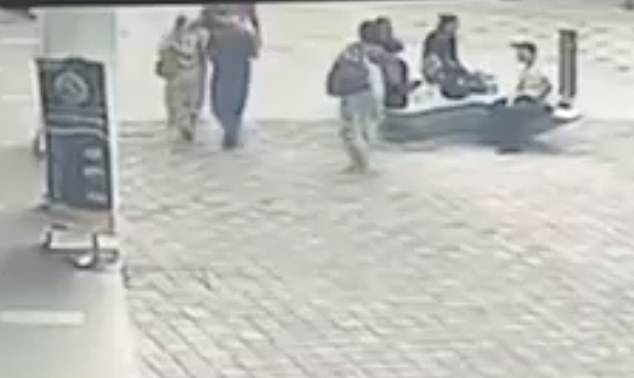Divers have stopped searching for a woman who went missing in a 26ft sinkhole more than a week ago after deeming it “too risky” to continue sending help.
The tragedy has rocked Malaysia, with more than 100 rescuers called in to rescue the 48-year-old woman who went missing, leaving only her trainers behind, when the pavement collapsed.
Vijaya Lakshmi Gali fell into a hole in Kuala Lumpur on August 23 and is believed to have been swept away by a violent underground current of water, through sewage.
Two divers were battling currents running through the sewer network when they entered at around 4 a.m. local time on Friday, the Fire and Rescue Department said.
“It was impossible and extremely difficult to break through the solidified rubble, which is like concrete blocks,” Director General Nor Hisham Mohammad told reporters.
The footage shows Vijaya Lakshmi walking along the pavement as normal before the collapse.
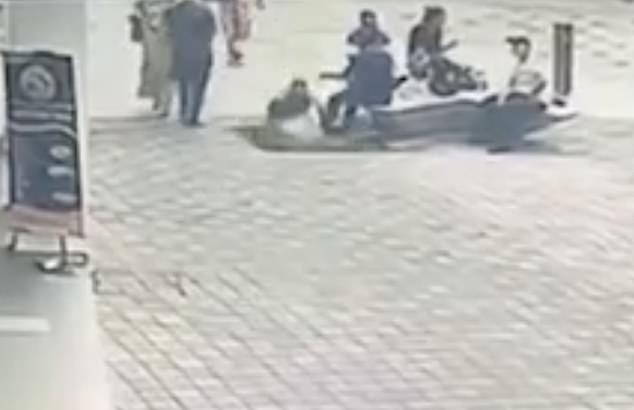
Suddenly, the ground opens up and she falls, while others narrowly avoid a similar fate.
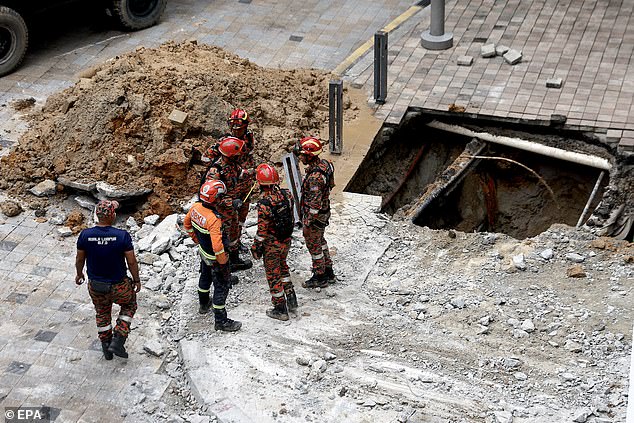
Malaysian Fire and Rescue Department officials inspect the site where a woman fell into an eight-metre-deep sinkhole
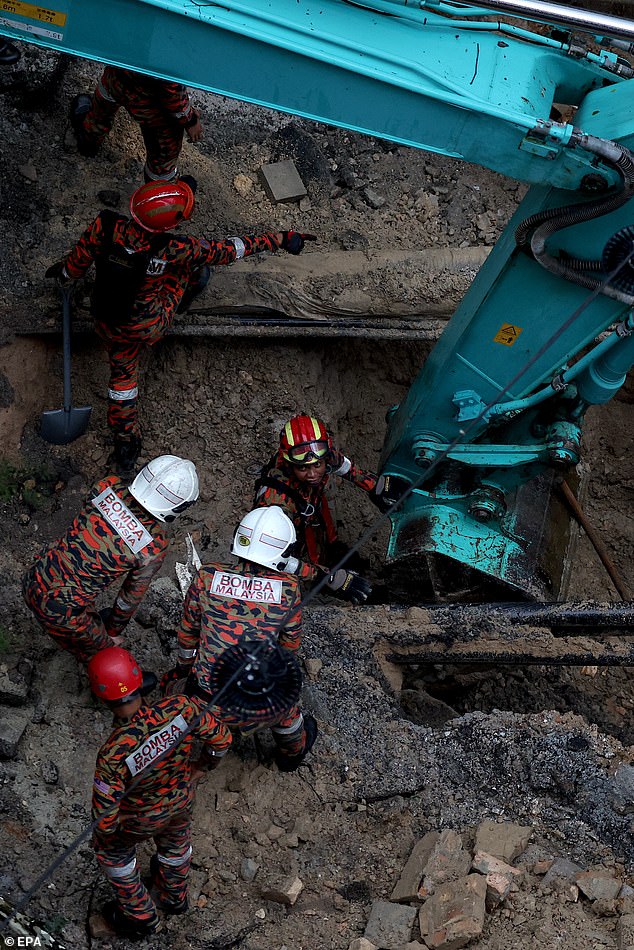
Rescue operations began immediately (photo: August 23) but have not made any progress.
Rescuers tried to break up the hardened rubble underground using high-pressure water jets, iron hooks and ropes, but to no avail.
“Even (when we tried) to pull them with ropes using up to eight people, (we) were not successful,” Mohammad said on Friday, before the search was called off.
“There are several factors that may lead to stopping the operation, including the safety and health of rescue personnel,” said Dr Zaliha Mustafa, a minister in the prime minister’s department.
Ms Lakshmi, a tourist visiting from Andhra Pradesh, is believed to have been on her way to a nearby temple with her family when the ground suddenly collapsed beneath her.
Lakshmi and her family are said to have been in Malaysia for about two months and were scheduled to fly home on Sunday.
Chilling footage shows the moment the 48-year-old woman walks down the pavement before suddenly disappearing.
CCTV footage shows other people sitting on a nearby bench barely managing to collide with the woman.
An initial search by Malaysian rescue teams found Ms Lakshmi’s shoes but no other sign of her, the Telegraph reported.
Excavators were later photographed at the site, while rescuers brought in sniffer dogs and robotic cameras to explore the underground network.
Authorities have since provided counselling to the woman’s relatives, including her husband and son.
The shopping area, known for its goldsmiths and jewellers, is about a 10-minute drive from the city’s Petronas Twin Towers.
Just one day later, another sinkhole appeared 50 meters away.
A geologist told local outlet Malaysiakini that it was likely related to the search efforts.
Authorities said a similar landslide was reported at the same location last year.
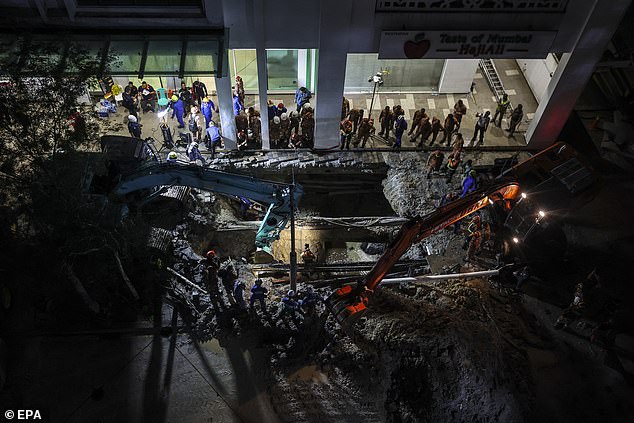
Crowds gather as wait drags on for missing Malaysian woman
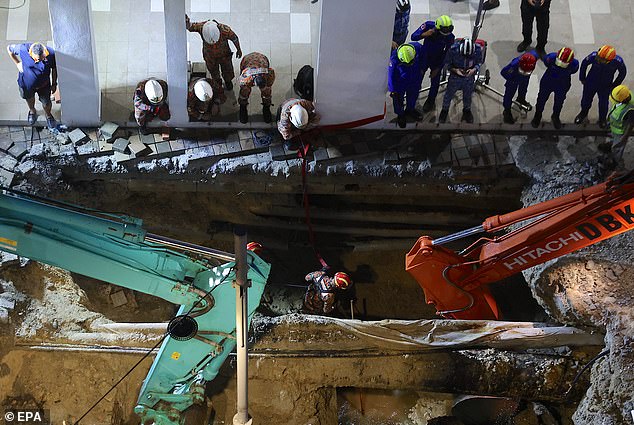
Rescue efforts continue overnight as fire crews inspect the sinkhole.
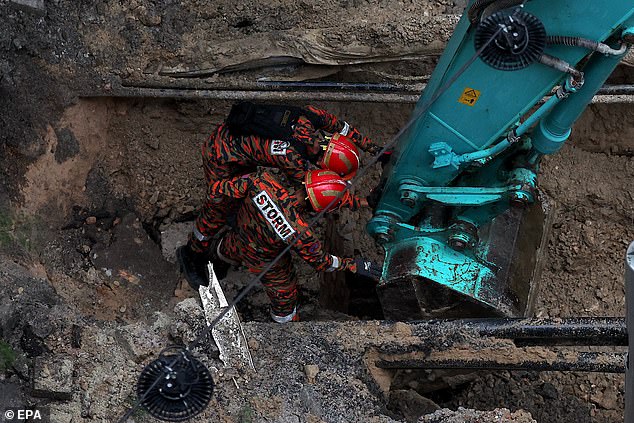
Excavators were later photographed at the site, while rescuers brought in sniffer dogs and robotic cameras to explore the underground network.
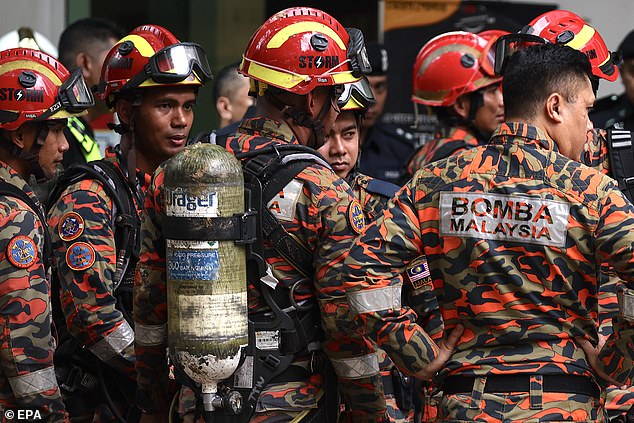
An initial search by Malaysian rescue teams found Ms Lakshmi’s shoes but no other sign of her.
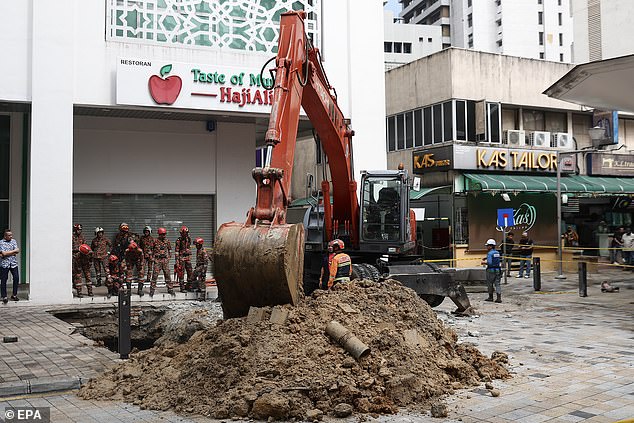
Ms Lakshmi, a tourist visiting from Andhra Pradesh, is believed to have been on her way to a nearby temple with her family when the ground suddenly collapsed beneath her feet.
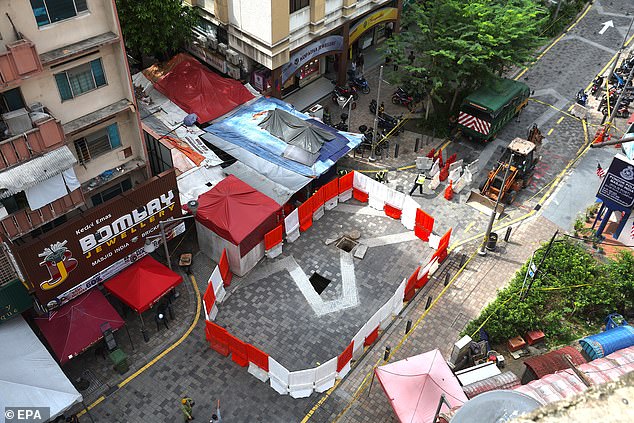
A day later, another sinkhole appeared 50 metres away. A geologist told local media Malaysiakini that it was probably related to the search efforts. (Pictured: new sinkhole on August 28)
Kuala Lumpur Mayor Maimunah Mohd Sharif has assured that the city is safe and has formed a task force to inspect sewer pipes in the area.
Experts have warned that Ms Lakshmi could have been swept away by strong currents if she had fallen into the sewage.
Datuk G Parameswaran, chairman of the Malaysian Water and Wastewater Quality Safety Association, told the Straits Times: ‘The wastewater is also very hard and the stream has a minimum flow velocity of one metre per second.
‘In theory, it could have travelled up to 86.4 kilometres in 24 hours.’

